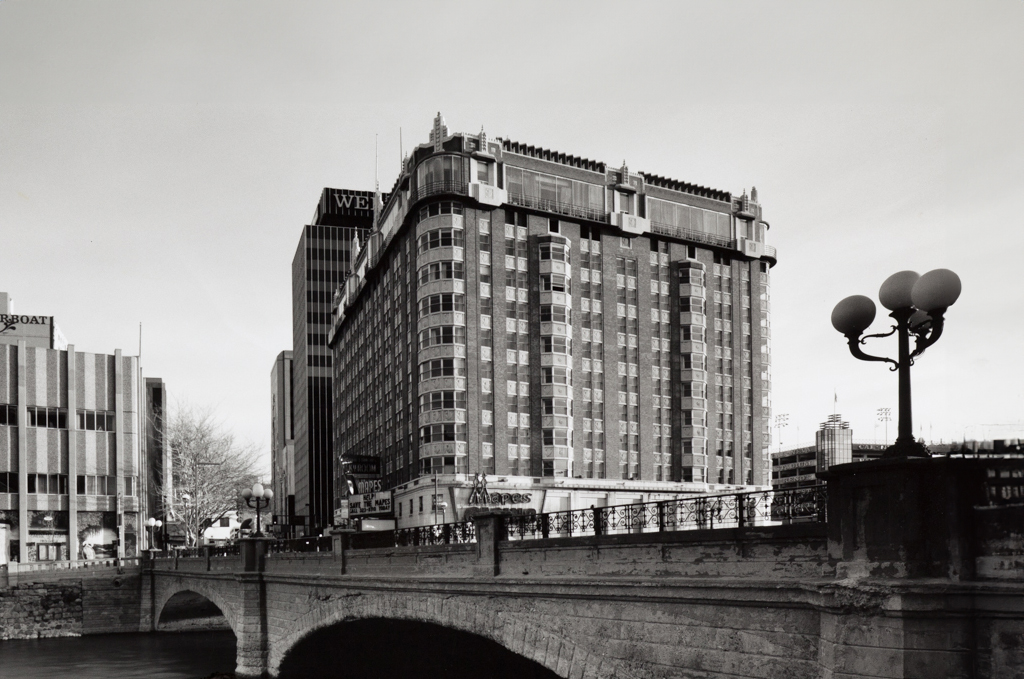The Mapes Hotel is an Art-deco skyscraper designed by F.H.Slocombe, and built between 1946 and 1947 in Reno, NV.
The exact addresss of the building was 10 North Virginia Street, Reno, NV. However, you won't be able to find it there anymore, since it was demolished in 2000, 53 year after opening its doors to the public.
The Mapes Hotel is a structure of significant importance both for the city of Reno and the United States as a nation. The building embodies the distinctive characteristic features of the time in which it was built and the Art Deco style. Because of that, the Mapes Hotel was officially included in the National Register of Historic Places in 1984.


